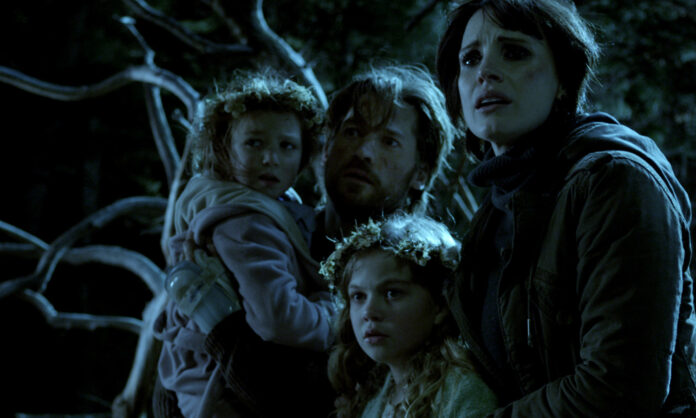In a post on her blog, Janice Hardy examines what writers can learn by studying the horror movie Mama. “The basic premise is this: Two young girls abandoned in the woods are rescued by a tormented spirit who decides to raise them as her own,” Hardy explains. “When the girls are found five years later, things get…complicated.”
Why is this movie so good?
- It has an antagonist you sympathize with, even though everything says you really shouldn’t. Mama is homicidal spirit, but she also saved the lives of two little girls and cared for them for five years. “You care about Mama’s goal, even when she’s freaking you out by her creepiness,” Hardy notes. “Lesson learned: Antagonists with relatable goals can make readers care more deeply about what’s going on in the story.”
- It has masterful pacing and knows how to manipulate the tension. The film blends tense, humorous, and heartwarming scenes with perfect pacing. “Scenes creep by when you need to feel every step, but they rush when the intent is to make you gasp,” Hardy explains. “The result is a wonderful rise and fall of feelings and anticipation that draws you in and holds you there.” The variety in tone and pacing elevate the film. “Lesson learned: Tension isn’t a ramp, it’s a series of waves, and how you manipulate those waves creates your tension,” Hardy writes.
- You never know what to expect, because it defies expectations. Because the audience feels empathy for Mama, the story could take unexpected turns. Naturally, the audience wants the living to survive to the end of the movie, but they also feel sympathy for Mama, who loves the girls she took in. Would it be so bad if she succeeded? “She acts in ways you don’t expect spirits to act, and the children she’s saved treat her as Mama, and not an evil spirit,” Hardy notes. “Those relationships change everything. Lesson learned: Look for the unexpected in your stories and don’t fall back on clichés or stereotypes, or even classic tropes.”
- It has an incredibly well-rounded conflict that’s not based on good vs evil or bad vs good. Mama is devoted to her children and the children feel loyalty to her, even though Mama isn’t alive. At the same time, the girls’ uncle wants them to be safe. His girlfriends doesn’t want to be a mom, but now has to help care for two weird girls who were missing for five years. “Every character has a conflict that’s both relatable and understandable, but no one is ‘evil.’ Not even Mama,” Hardy notes. In this story, conflict arises when everyone wants to do the right thing, but defines “right” differently. “Lesson learned: Sometimes the best conflicts come from people trying to help, not hurt,” Hardy says.
- It has layered characters who feel like real people. The film avoids clichés and gives each character a layered personality. “There’s actually no ‘bad guy’ in this film,” Hardy writes. “Everyone has an agenda, but they all have the best interests of the children at heart. Lesson learned: You can develop well-crafted stories by creating real people with nuance, complex emotions and desires.”
- It has an ending that’s perfect for the story, even if it’s not the ending viewers probably wanted. “You want so many different things for these characters by the end of the movie, it’s hard to know what a ‘win’ would be,” Hardy notes. “Lesson learned: What’s right for the characters can also be right for the readers if you’ve set it up correctly. A strong resolution to a well-crafted story arc can be a much more satisfying ending than forcing things to end ‘right’ or ‘happy’ if there’s no basis for it.”












